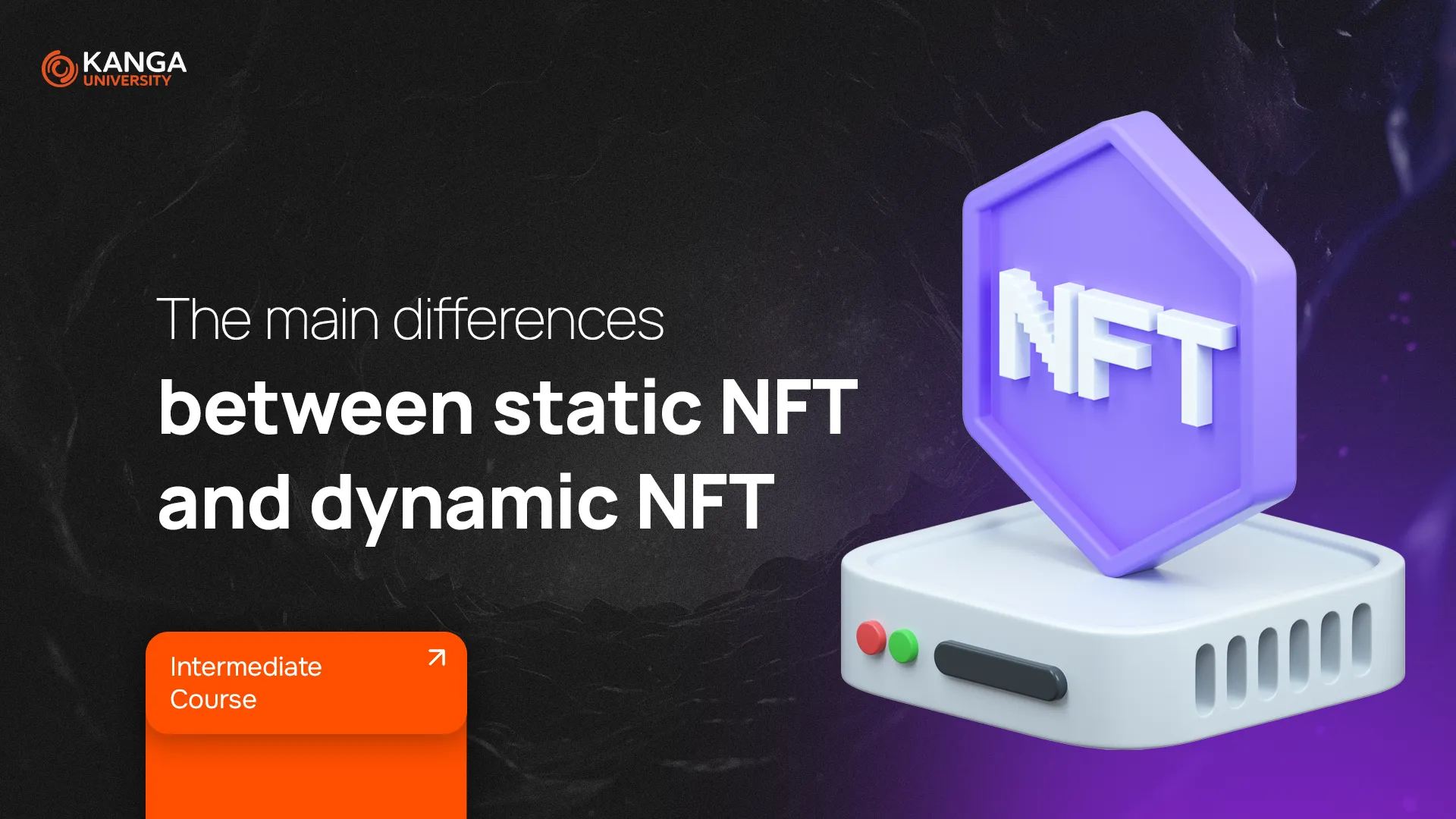
By now, you probably have a basic idea of what NFTs are – unique digital items that prove ownership of things like art, music, or even in-game items. But did you know that NFTs come in two main types? Today’s lesson will break down the difference between static NFTs and dynamic NFTs. Both play different roles in the digital world and offer different benefits depending on how they’re used.
What Are NFTs?
NFTs (Non-Fungible Tokens) are digital assets stored on a blockchain. What makes them special is that each one is unique and can’t be replaced with another. Unlike cryptocurrencies like Bitcoin or Ethereum, where one coin equals another, NFTs are one-of-a-kind.
They’re used to represent things like digital art, videos, collectibles, game items, identity credentials, or even real estate in virtual worlds. Their ownership is recorded on a blockchain, and smart contracts allow certain rules – like royalties or functionality – to be coded directly into the token.
Now that we’re clear on what NFTs are, let’s talk about their two forms: static and dynamic.
What Are Static NFTs?
Static NFTs are unchangeable. Once created, the data attached to them is locked in and can’t be edited. That makes them a great choice for assets that aren’t meant to change – like digital art, collectible items, or verified identity documents.
Because the data doesn’t change, static NFTs are more secure and easier to verify. They’re efficient, compatible with most existing platforms, and don’t require additional infrastructure.
But this comes with limitations. Static NFTs can’t be updated. If you want to change or add information, you’d have to mint a completely new NFT. They also tend to have limited use across newer applications that require more flexibility.
Still, static NFTs are the most common type out there – used in art marketplaces, digital ID systems, and blockchain document storage.
Common Uses of Static NFTs
-
Digital art collections: Artists mint their work as NFTs and sell them to collectors. Each piece is unique and can’t be modified.
-
Identity verification: Some companies use static NFTs to store digital identity credentials because the data can’t be tampered with.
-
Document storage: Legal documents or certificates can be stored permanently as static NFTs.
-
In-game items: Weapons, gear, or property in games can be sold as static NFTs that players fully own and control.
What Are Dynamic NFTs (dNFTs)?
Dynamic NFTs are designed to evolve. Unlike static NFTs, they can be updated after creation. Think of them as living digital assets that respond to changes in real-time or based on specific conditions.
How does this work? The data in dynamic NFTs is stored in a way that allows updates – either manually (by the owner) or automatically (based on predefined rules in the smart contract). That means the NFT can “grow” or change based on how it’s used.
One popular example is CryptoKitties – a blockchain game where each NFT represents a virtual cat. As the cat evolves, its traits (stored in the NFT) can change over time.
Dynamic NFTs are ideal for projects that require personalization, real-time updates, or interactivity.
Pros of Static NFTs
-
Efficient and lightweight: Easy to store and trade without consuming too much computing power.
-
Easy to verify: All the metadata is in one place and doesn’t change.
-
Tamper-proof: The content is locked and can’t be edited, which reduces fraud.
-
Collateral potential: Static NFTs can be used as security for loans, which is harder with dynamic ones.
Pros of Dynamic NFTs
-
Increased engagement: Constant changes keep users coming back for more.
-
More immersive experiences: They can react to real-world events, like a game character leveling up.
-
Boosted fan loyalty: Dynamic NFTs can offer evolving perks or content to users, building stronger communities.
-
Flexible monetization: Their adaptability allows creators to experiment with different revenue models.
-
Innovation driver: The ability to update makes them perfect for tech-forward projects and interactive experiences.
So, Which One Is Better?
That depends on what you need the NFT for. Static NFTs are great for simple, permanent assets. Dynamic NFTs are better for use cases that require updates or personalized interactions.
In many cases, creators and developers use both types depending on their goals. The NFT space is growing fast, and we’re likely to see even more advanced variations as the technology evolves.
Key Takeaways
-
Static NFTs are fixed, reliable, and secure. Perfect for art, documents, and collectibles.
-
Dynamic NFTs are flexible, updatable, and interactive. Great for games, metaverse, and changing data.